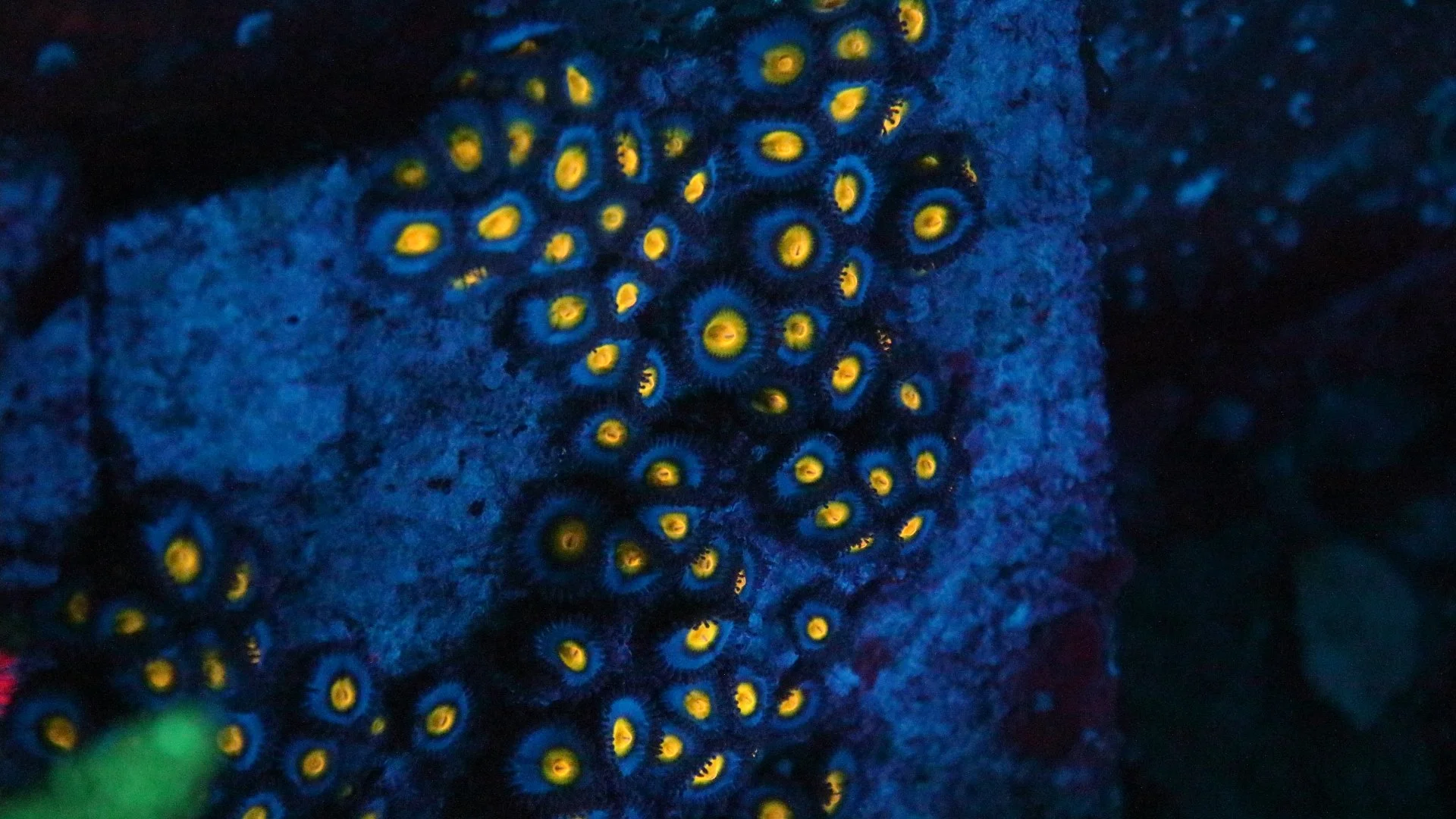 Image 1 of 1
Image 1 of 1


World Wide Corals AOI Zoanthids
The AOI Zoanthids (Zoanthus sp., often Z. pulchellus lineage) are a highly coveted, aquacultured strain of colonial soft corals originating from Japanese-inspired breeding lines, where "AOI" is a term evoking "blue and green" hues in the reef aquarium hobby. They're prized for their compact, mat-forming growth and explosive fluorescence, making them a staple for beginners and experts adding vivid texture to rockwork.
Appearance
Structure: Forms tight clusters of 4-5 polyps (or more in mature colonies) that encrust and spread across surfaces in a low-profile, carpet-like mat, with each polyp roughly 0.5-1 cm in diameter and oral disks that fully extend under good conditions.
Coloration: Iconic bright blue skirts or outer rims encircling intense yellow to neon green oral disks and centers, creating a high-contrast, jewel-like pattern; under actinic or blue-heavy lighting, the blues and greens pop with electric fluorescence, while the yellows glow warmly for a multidimensional effect.
Sold in 5-10 polys
The AOI Zoanthids (Zoanthus sp., often Z. pulchellus lineage) are a highly coveted, aquacultured strain of colonial soft corals originating from Japanese-inspired breeding lines, where "AOI" is a term evoking "blue and green" hues in the reef aquarium hobby. They're prized for their compact, mat-forming growth and explosive fluorescence, making them a staple for beginners and experts adding vivid texture to rockwork.
Appearance
Structure: Forms tight clusters of 4-5 polyps (or more in mature colonies) that encrust and spread across surfaces in a low-profile, carpet-like mat, with each polyp roughly 0.5-1 cm in diameter and oral disks that fully extend under good conditions.
Coloration: Iconic bright blue skirts or outer rims encircling intense yellow to neon green oral disks and centers, creating a high-contrast, jewel-like pattern; under actinic or blue-heavy lighting, the blues and greens pop with electric fluorescence, while the yellows glow warmly for a multidimensional effect.
Sold in 5-10 polys

